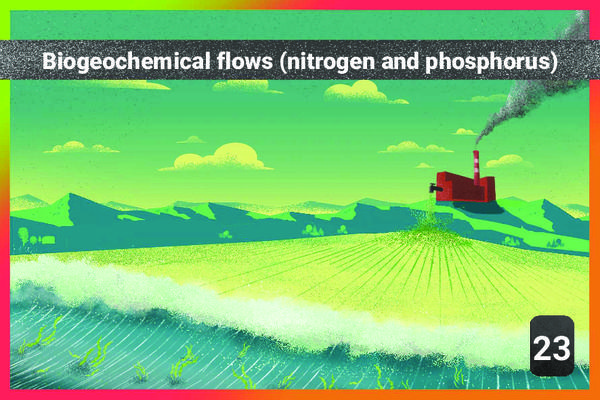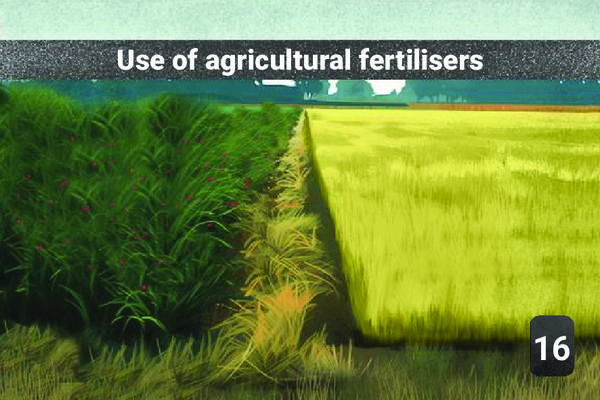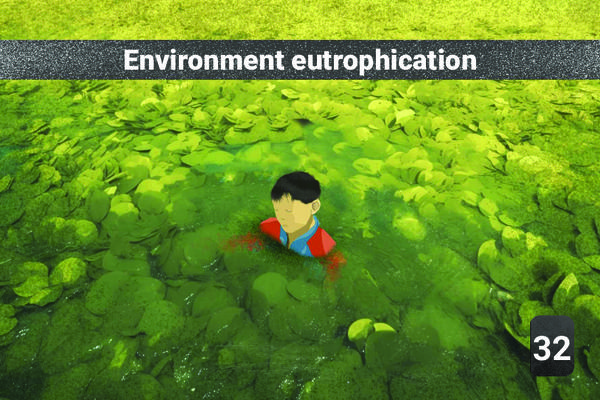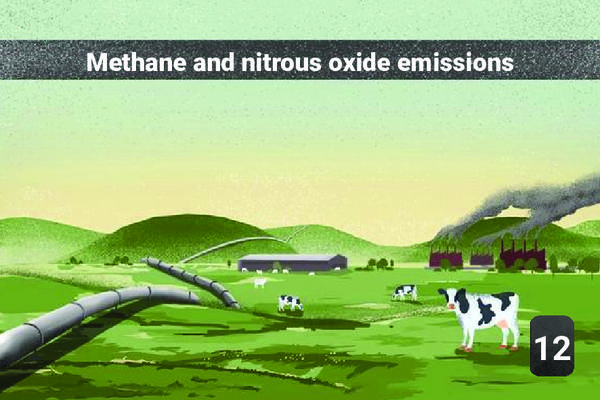23 - Biogeochemical flows (nitrogen and phosphorus)

✏️ This explanation does not yet exist in your language… Just click here or send an email to fdn.memo@marc-antoinea.fr and suggest your translation!
"Le Reveilleur videos on Phosphorus: https://www.youtube.com/watch?v=gqfXMDK3dnE For nitrogen, the challenge is to prevent excessive release of reactive nitrogen into water and natural aquatic environments in order to avoid their eutrophication. We therefore measure the fixation of dinitrogen by industry and agriculture. The threshold not to be exceeded for nitrogen is set at 62 teragrams per year (Tg N/year). Nitrogen is abundant but inactive in the atmosphere. To play its role, it must be made active (we call this "fixation"), either naturally via bacteria, or by an industrial process. The introduction of additional flows of nitrogen into the natural cycle leads to saturation of natural environments, and we find these surplus nitrogen in the atmosphere via nitrous oxide (powerful GHG) and in rivers.
For phosphorus, the challenge is to avoid an episode of strong reduction of oxygen in the oceans. At the global level (asphyxiation of the oceans), the threshold is estimated at 11 teragrams per year (Tg P/year) of phosphorus released into water (it must not be more than ten times higher than natural discharge). In addition, phosphorus is an exhaustible resource from the mining industry (depletion expected during this century)."
1Cause
Some of the agricultural fertilizers containing nitrogen and phosphorus do not remain in the fields and pollute rivers and oceans. These nitrogen and phosphorus flows are at least twice the safe zone threshold: this process is in the significant risk zone.
1Consequence
1Other possible consequence
Nitrous oxide (N2O) emissions are directly linked to the disruption of the nitrogen cycle, which is one of the nine key areas defined by the Planetary Borders concept. The nitrogen cycle is a natural process that involves the different stages of fixation, assimilation, transformation and release of nitrogen into the environment.



